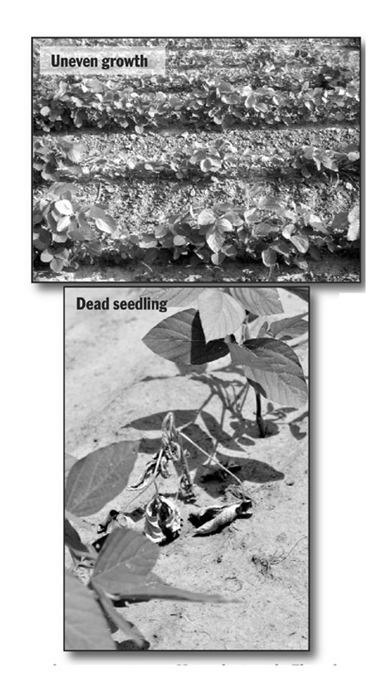Accelerated Aging Could Be A Better Yardstick For Soybean Seed Viability, Says UA Study
HAZEN, ARK.
A three-year study of soybean seed quality by the University of Arkansas System Division of Agriculture has found accelerated aging to be a valuable aid in assessing the quality of seed when compared with standard germination testing, researchers said Tuesday.
Rick Cartwright, associate director of agriculture and natural resources, John Rupe, professor of plant pathology, and Kimberly Cochran, a Ph.D. student, presented their findings at a crop production meeting in Hazen last week. Though it was the last item on a daylong agenda, the presentations drew lively questions from the audience.
Researchers designed the study to understand the effects of storage on seed quality and the seed’s ability to emerge and establish a productive plant under field conditions. All seed is required to undergo a standard germination test and the results printed on the seed label. Under this test, seeds are placed on blotter paper and germinated during a week of ideal conditions. In the accelerated aging test, or AA, seeds are placed under stress for three days, then germinated. Accelerated aging is an accepted method that is widely used, but not required by law.

Accelerated aging provides an estimate of seed vigor, a complex property that prompts the seed to “push out of the soil,” Cartwright said. “It’s a more complicated trait, but is a valuable to understand for the high-value seed being planted today.”
Trends in the three-year planting seed survey indicated that more often than not, the lower the accelerated aging score, the worse the stand, while standard germ values did not run parallel with the stands in this study. “This indicates that seed vigor is very important, especially under less-than-ideal planting condition such as in June, when it is getting hotter and drier.
“Vigor does not stay constant in soybean seed in the South,” he said. “It tends to decline in storage over time, especially for seed to be used in June or July in the state.”
HOW THE STUDY WORKED
Researchers used two cultivars stored in commercial warehouses in Cache, Weiner and De- Witt, with the air-conditioned storage at the Arkansas State Plant Board in Little Rock serving as a control. The seed was all stored in typical 55-pound paper bags. Some bags were placed in areas considered “good” storage, “bad” storage and in an on-farm storage facility.
The seed was sampled every two weeks between April 15-Aug. 15, and subjected to standard germination and the accelerating aging test. The seed was also planted at a University of Arkansas experiment station near Kibler to test emergence.
Temperatures were about the same at each location, and sensors showed the highest level of humidity at 70 percent. “Differences in humidity appeared to have the most impact on AA at these locations, with on-farm storage having the highest humidity and lowest AA.”
In field testing, the stored seed lots in 2011, emergence of all seed basically stopped between July 5 and Aug. 5 at Kibler, when daytime temperatures exceeded 100 degrees Fahrenheit. After Aug. 5, as daytime high temperatures dropped into the low 90s, emergence began again. Seed stored in the air-conditioned site emerged best and seed stored at the on-farm site had the worst emergence.
“Sometimes, it’s just too hot to plant beans,” Rupe said, adding that it might be possible to breed soybean varieties that could handle the high temperatures and tough seedbed conditions better – similar to soybeans planted here in the 1970s and 1980s.
RAMIFICATIONS
One producer asked why accelerated aging wasn’t required by law. AA is a very sensitive and dynamic test, Cochran explained.
Rupe said there has been some pushback about making AA required because “some of the ratings change over time,” adding that “If you take one in November, it’ll be higher than a result in April when you plant the seeds.”
“Taking a vigor test is like taking a picture of a baby – its’ always changing,” said Mary Smith, director of the seed division of the Arkansas State Plant Board. “When would you take that picture? In March, it’s probably going to be different than if it was taken in June.
“No one has recommended it yet, even the seed testing associations,” Smith said.
Researchers welcomed input from producers, including one suggestion that selected soybean varieties be assessed in mid-June for emergence potential under real-life conditions, including today’s seedbed types. The aim would be to get a better idea of the genetic differences in the ability of each variety to “get out of the ground.” Cartwright said it’s hoped the result of this kind of test would be to develop a more reliable and profitable soybean for the South, not just the ones with the highest yield potential under “ice cream conditions.” The information could also help farmers select the best varieties for June planting.
Results from the planting seed survey, seed storage experiment and other parts of the Arkansas Soybean Seed Quality Project will be published this year. Δ
Dead seedling
Uneven growth